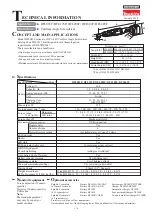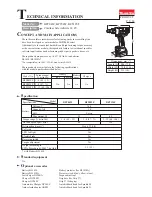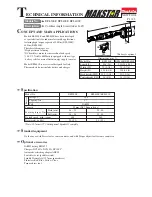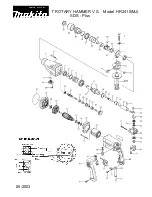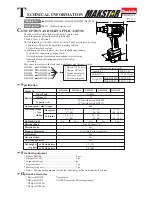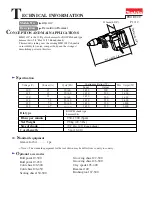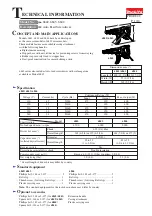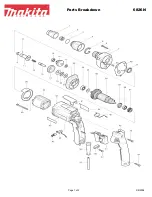
Page 28
LXI Discovery Tool
This tool can be used to display the IP addresses and other associated information of all
connected devices that comply with the VXI-11 discovery protocol. It is a Windows PC
application, which is provided on the supplied CD ROM that can be installed and run on the
controlling PC, with the unit either connected directly to the PC network connector or via a
router. Double clicking on any entry in the list of discovered devices will open the PC's web
browser and display the Home page of that device. For a later version of the tool that supports
discovery by both VXI-11 and mDNS visit www.lxistandard.org . There are also tools for LAN
discovery included as part of the National Instruments Measurement and Automation Explorer
package and the Agilent Vee application.
VXI-11 Discovery Protocol
The instrument has very limited support of VXI-11 which is sufficient for the discovery protocol
and no more.
It implements a Sun RPC Port-mapper on TCP port 111 and UDP port 111 as defined in
RFC1183. The calls supported are:
NULL, GET PORT and DUMP.
On TCP port 1024 a very simple VXI-11 protocol is implemented, sufficient only for instrument
discovery. This implements the following calls:
CREATE LINK, DEVICE_WRITE, DEVICE_READ and DESTROY_LINK.
Once a link has been created anything written to the device is ignored and any attempt to read
from the device returns the same identification string as the *IDN? query.
VISA Resource Name
Because of the limited support for VXI-11 (Discovery Protocol only), the instrument must be
referred to by its raw socket information when used with software packages which communicate
using a VISA resource name. For example, an instrument at IP address 192.168.0.100 would
normally have a VISA resource name of "TCPIP0::192.168.0.100::inst0::INSTR" but for this
instrument the name must be modified to read "TCPIP0::192.168.0.100::9221::SOCKET" where
9221 is the TCP port used by this instrument for control and monitoring, see below.
XML Identification Document URL
As required by the LXI standard, the instrument provides an XML identification document that
can be queried via a GET at “http://IPaddress:80/lxi/identification” that conforms to the LXI XSD
Schema (available at http://www.lxistandard.org/InstrumentIdentification/1.0 ) and the W3C
XML Schema Standards ( http://www.w3.org/XML/Schema ). This document describes the
instrument. The hostname can be used instead of the IP address if name resolution is working.
TCP Sockets
The instrument uses 2 sockets on TCP port 9221 for instrument control and monitoring. Text
commands are sent to this port as defined in ‘Remote Commands’ and any replies are returned
via the same port. Any command string must contain one or more complete commands.
Multiple commands may be separated with either semicolons
“;”
or line feeds. No final
terminator is required, since the TCP frame implies a terminator, but one may be sent if desired.
13.2.6
Interface Locking
All the remote interfaces are live at all times, to remove any need to select the active interface
and to ensure that the LAN interface is always available (as demanded by the LXI standard). To
reduce the risk of the instrument being inadvertently under the control of two interfaces at once
a simple lock and release mechanism is provided in the instruction set. The lock is
automatically released where it is possible to detect disconnection, or when the Local key is
pressed. Access to the interfaces may also be restricted using the web pages.
Any interface may request to have exclusive control of the instrument by sending an “IFLOCK
1” command. The lock may only be released by sending an “IFLOCK 0” command from the

































